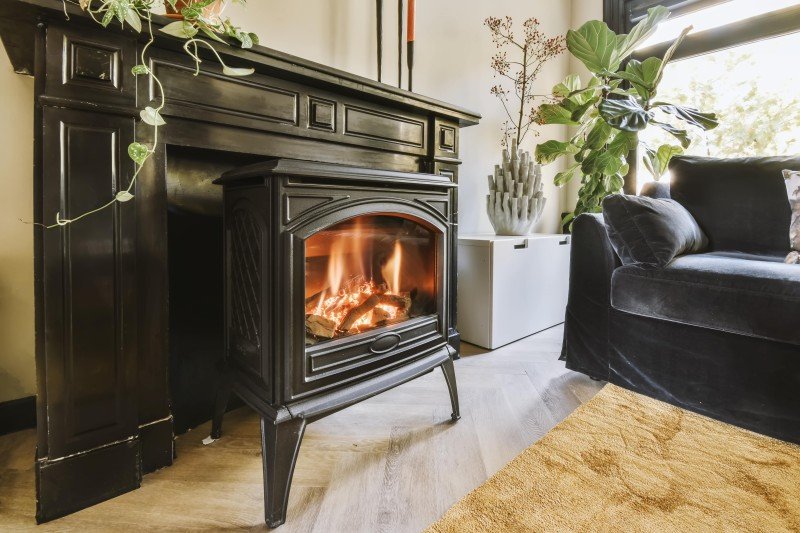7 Small Changes That Will Make A Big Difference In Your Multi Fuel Stoves For Sale
Multi Fuel Stoves for Sale: A Comprehensive Guide
Multi fuel stoves have actually gotten increasing appeal throughout the years due to their versatility, efficiency, and visual appeal. These stoves can burn various kinds of fuel, such as wood, coal, and biomass, enabling house owners to choose the most economical and environmentally-friendly option based upon their requirements. This short article aims to supply a thorough introduction of multi fuel stoves, their advantages, factors to consider for acquiring, various types available, and responses to frequently asked questions.
The Benefits of Multi Fuel Stoves
Multi fuel stoves provide a range of benefits for house owners seeking to optimize their heating options. A few of the crucial benefits include:
- Versatility: The ability to use different fuels allows property owners to adjust to altering circumstances, such as fluctuating fuel prices or availability.
- Cost-effectiveness: Depending on local fuel prices, users may find cost savings by burning less expensive fuels like wood or coal.
- Ecological Impact: Many multi fuel stoves produce lower emissions than traditional heating systems, especially when utilizing sustainably sourced biomass.
- Aesthetic Appeal: Multi fuel stoves include a touch of heat and beauty to any living area, developing a cozy environment.
- Efficiency: Modern multi fuel stoves are created to take full advantage of combustion and heat output, offering an efficient heating option for homes.
Types of Multi Fuel Stoves
When thinking about a multi fuel range, it's essential to comprehend the various types available on the market. Below are some typical classifications:
Type
Description
Normal Fuel Sources
Wood Burning Stoves
Particularly created for burning wood logs and pellets.
Logs, wood pellets
Coal Stoves
Stoves optimized for burning coal, providing high heat output.
Anthracite, bituminous coal
Pellet Stoves
Use compressed pellets made from wood or biomass, efficient burning.
Wood pellets, biomass pellets
Combination Stoves
Capable of burning both wood and coal, using versatility.
Wood, coal
Biofuel Stoves
Developed to burn liquid biofuels, promoting sustainability.
Bioethanol, biodiesel
Considerations for Purchasing a Multi Fuel Stove
Before investing in a multi fuel stove, there are numerous factors to take into account to make sure the chosen design fulfills heating needs and choices. Here are some crucial factors to consider:
- Size and Capacity: Evaluate the heating requirements for the space and select a range with the appropriate output. This is normally determined in kilowatts (kW).
- Efficiency Ratings: Look for stoves with high efficiency scores, which signifies much better fuel usage and lowered emissions.
- Product and Build Quality: Opt for stoves made from resilient materials such as cast iron or state-of-the-art steel that can endure high temperature levels.
- Price: The spending plan plays a substantial role in decision-making. Consider both the in advance cost and continuous fuel costs.
- Setup: Some models might require professional setup or particular flue systems. Examine local regulations and codes for compliance.
- Aesthetics: Consider the style and finish to ensure it matches your home décor.
FAQs About Multi Fuel Stoves
1. Can I utilize any type of fuel in a multi fuel stove?
Multi fuel stoves are created to use particular types of fuels. Constantly refer to the manufacturer's standards to understand which fuels work.
2. How do I keep my multi fuel stove?
Routine maintenance includes cleaning up the flue pipeline, looking for obstructions, and examining seals and gaskets. Following Fireplaces Near Me is vital for security and efficiency.
3. Are multi fuel stoves safe to utilize?
Yes, when properly set up and kept, multi fuel stoves can be a safe heating alternative. It is necessary to follow security policies and guidelines for setup.
4. Do Cheap Fireplaces require a chimney for a multi fuel range?
Yes, most multi fuel stoves need a chimney or flue system to vent smoke and gases outside the home. Make sure that the system is set up according to local building regulations.
5. What is the typical life-span of a multi fuel range?
With appropriate maintenance, a well-built multi fuel range can last anywhere from 15 to 25 years, depending upon use and care.
Multi fuel stoves use a versatile and efficient heating option for property owners, allowing them to pick their favored fuel type based on expense and accessibility. By considering the different kinds of stoves, their benefits, and factors to consider when purchasing, individuals can make educated decisions that will improve their home's convenience. With a wide variety of options readily available, possible buyers need to do comprehensive research study, taking into account the range's efficiency, fuel compatibility, and overall style to find the best suitable for their requirements.
In conclusion, while multi fuel stoves can appear like a huge financial investment, their adaptability and efficiency make them a worthwhile addition to any home. Whether it's for additional heating or as the main source of heat, a multi fuel stove offers a practical solution for the modern property owner wanting to balance convenience with sustainability.
